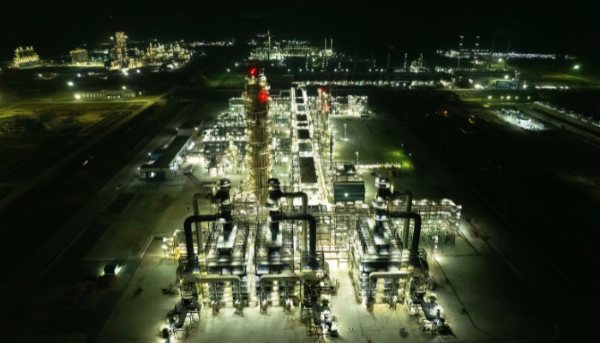The Dangote Refinery has generated 1,500MW of electricity in a short time, well above the 760MW of power to the national grid generated by the Nigerian government in over 11 years, BusinessDay reports.
Data sourced from the Nigeria Electricity System Operator showed Generation Companies (Gencos)’ delivery to the Distribution Companies (Discos) via the Transmission Company of Nigeria (TCN) has increased by 22 percent from an average of 3,400mw in November 2013 to an average generation of 4,160mw, as at 12 June 2024.
However, Dangote’s oil refinery produced 1,500mw of power after construction in 2018, surpassing the total national grid expansion achieved in over a decade.
“We don’t put pressure on the grid. We produce about 1,500 megawatts of power for self-consumption,” Aliko Dangote said at the Afreximbank Annual Meetings and AfriCaribbean Trade & Investment Forum in Nassau, The Bahamas.
This development has raised concerns about the snail pace of growth in Nigeria’s power sector despite billions of dollars in investment and an 11-year-old privatisation exercise.
“The government and some operators in the sector may say there has been some form of growth since 2013, but in actual terms, how many people are benefiting from the privatised power sector? most conglomerates are generating their power,” Charles Akinbobola, a senior energy analyst at Sofidam Capital said.
ALSO READ [BREAKING] Dangote pays $2.4bn of $5.5bn borrowed to build refinery
He added, “The challenge of the power sector has not entirely been the scarcity of funds, several trillions of naira have been pumped into that industry. The sector has been plagued by the shortcomings of its managers”.
Nigeria can produce 13,000mw of power compared with more than 58,095mw for South Africa, which has a similar-sized economy and a quarter of the population.
Nigeria’s ageing grid however delivers only about 4,000mw of power to its over 200 million citizens — roughly what the city of Edinburgh provides for 548,000 residents.
BusinessDay analysis shows that although Nigeria’s transmission capacity has increased by 20 percent to an average of 4,200mw since 2013, Nigeria’s population has soared by 57 percent within the same period from 131 million people to 206 million, according to the latest World Bank estimates.
While Nigeria seems to be moving at a snail pace, other African countries are racing ahead.
For instance, Egypt, a country with a population of 114 million inhabitants, added a total of 28,229mw to its national grid between December 2015 and December 2018, resulting in a total installed capacity of 58,818mw.
According to the United States Department of Commerce, International Trade Administration, this has been achieved through a fast-track project that worked on installing 3,636mw of electricity in 8.5 months and is worth $2.7 billion.
ALSO READ Dangote Refinery shifts petrol supply to mid-July
Egypt also signed another project with Siemens in March 2015, which added 14,400mw in 2.5 years by building three mega combined power cycle stations.
“By converting old simple cycle power plants to combined cycle, another 1,850mw were installed,” the US report said.
In Ghana, between 2000 and 2020, electricity generation capacity increased at a rate of 6.4 percent a year from 1,358mw to 4,695mw, according to data from the country’s energy agency.
“While other countries seem to be getting it right in terms of power; Nigeria’s power sector issue has become a major conundrum in the economy. There is a major funding and liquidity crisis which is posing significant risk to investments in the electricity value chain,” Muda Yusuf, the chief executive officer, the Centre for the Promotion of Private Enterprise said.
He added, “Some fundamental issues need to be addressed in the electricity value chain. There are issues of technical and commercial losses which are yet to be addressed. These are inefficiencies costs that consumers are compelled or expected to pay for as part of the cost recovery argument. And these costs are in billions of naira”.
BusinessDay’s findings showed that rising energy costs are disrupting productive activities in Africa’s most populous nation as factories self-generate more than 14,000 megawatts of electricity due to poor supply from power distribution companies.
ALSO READ Dangote Refinery ships 1st jet fuel to Europe
According to documents compiled by the Manufacturers Association of Nigeria, member companies spent N639 billion on alternative energy sources between 2014 and 2021.
Manufacturers spent N25 billion in 2014, N59 billion in 2015 and N129.95 billion in 2016.
Moreover, they spent N117.38 billion in 2017; N93.11 billion in 2018; N61.38 billion in 2019; N81.91 billion in 2020, and N71.22 billion in 2021.
Findings showed the figures have varied over the years due to the effects of inflation and the number of member companies in the association, among other factors.
BusinessDay


